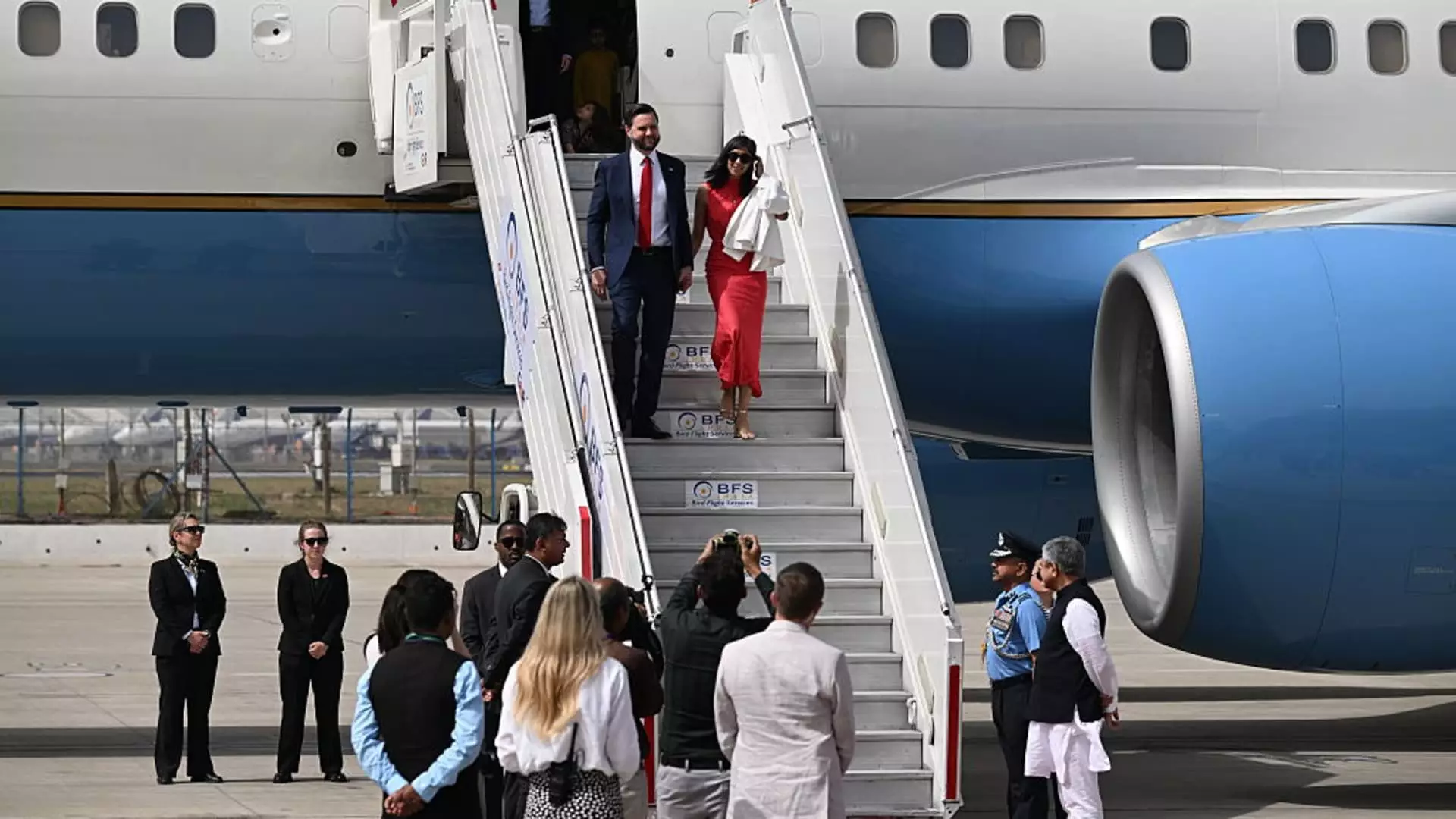In an increasingly interconnected world, the nuances of international diplomacy can often resemble a complex dance, where timing, perception, and carefully chosen words play pivotal roles. Vice President JD Vance’s recent visit to India underscores this complexity and illustrates the delicate balancing act that both nations must perform amid increasing global tensions. Vance’s four-day tour is not merely a diplomatic engagement; it is a carefully orchestrated attempt to bridge significant divides while reinforcing alliances against the backdrop of an aggressive trade stance from the U.S. administration.
While Vance’s trip is punctuated with personal activities—visiting historical sites and attending a wedding—it is fortified by an undercurrent of strategic necessity. India is at a crossroads, as it strives to align itself closer to the Trump administration while adapting to the rapidly evolving global landscape. The Prime Minister Narendra Modi’s administration aims to avert punitive tariffs that could disrupt a flourishing trade relationship. Such significances, wrapped in familial warmth, do not camouflage the critical negotiation points that are inherent to Vance’s visit.
The Quest for Fairness in Trade
Perhaps no issue looms larger in the backdrop of this visit than the contentious trade dialogue between the U.S. and India. With trade between the two nations surging to an impressive $129 billion in 2024, the stakes couldn’t be higher. Vance and Modi’s discussions revolve around “fairness” in trade— a term that has become somewhat of a euphemism for balancing interests in a more equitable manner. The Indian government is purportedly amenable to reducing tariffs on U.S. imports as part of a broader negotiation package, but it remains to be seen whether such concessions will hold weight amid Trump’s declared animus towards India being a “tariff king.”
Such characterizations may sound like posturing, a mere play to stoke domestic political fires rather than a harbinger of true engagement. Yet, in actuality, any ongoing tariffs pose significant risks not only to trade but to employment and growth within India. American companies seeking entry into Indian markets face challenges that could dissuade prospective partnerships. Vance’s role, while ostensibly supportive, must tread lightly to avoid exacerbating these fears while attending to the crowded timetable of both leaders.
The Complicated Layer of Defense Partnerships
Defense is another crux upon which Vance’s visit pivots. An expected framework for defense cooperation looms large over the dialogues between the two nations, steadily underscoring the urgency of collaboration amid rising tensions with neighboring China. This multilayered relationship is about more than military hardware; it’s also an assertion of ideologies—of democratic values against authoritarian encroachments.
As India eyeing procurement of advanced military technologies from the U.S., the interconnectedness of defense collaborations signifies a shift in global military strategies. Vance’s discussions could potentially impact critical defense procurement deals that include American-made Javelin anti-tank guided missiles and infantry combat vehicles. Yet, while the timeline seems promising, the actual commitments remain shrouded in ambiguity, raising questions about the fidelity of these promises amidst geopolitical shifts.
The fundamental question remains — can diplomatic visits like Vance’s truly forge a partnership that sidesteps the lurking threats from economic and military fronts? As history teaches, alliances formed in moments of need can just as quickly fray in the absence of genuine commitment.
Strategic Significance Beyond Deals
The timing of Vance’s diplomatic engagement must be recognized for its broader implications, given the backdrop of escalating tensions between the U.S. and China. As the geopolitical chessboard gets more complex, each move carries weight far beyond immediate implications. Analysts suggest that such a visit reflects a tacit recognition of India’s strategic importance in U.S. foreign policy. It’s an acknowledgment of a site of potential cooperation that could yield dividends for both countries, not only economically but also in terms of regional stability.
The duality of a personal yet geopolitical mission reveals the intricacies of the United States’ ambitions in Asia. As such, Vance’s dialogues in India are more than mere diplomatic niceties—they serve as prelude to broader strategies leading into the anticipated Quad summit later in the year. Each engagement becomes a building block in what officials hope will solidify commitment across the Indo-Pacific.
While JD Vance’s tourism through India garners public approval, the underlying motives propel this venture into a realm of serious diplomatic enterprise. As the U.S. seeks lasting partnerships depicted through friendly gestures, they must navigate a treacherous terrain where the insatiable quest for fairness in trade and robust defense dealings shape the narrative of future interdependence.


Leave a Reply